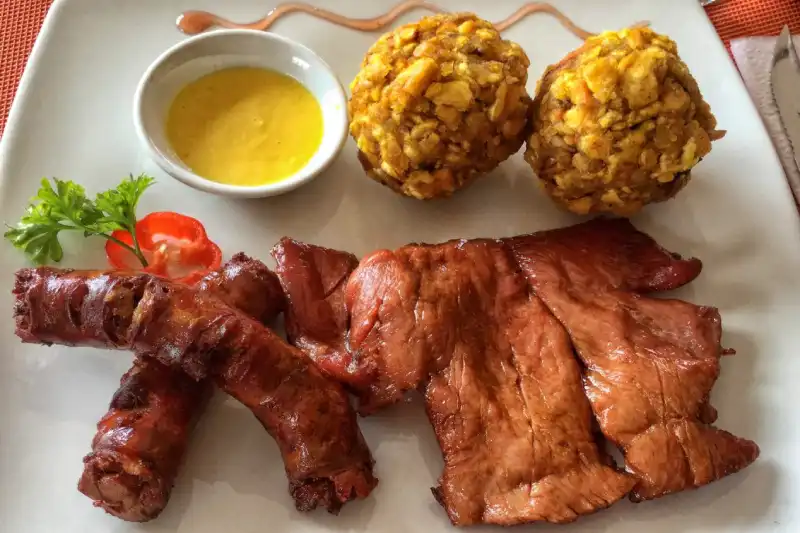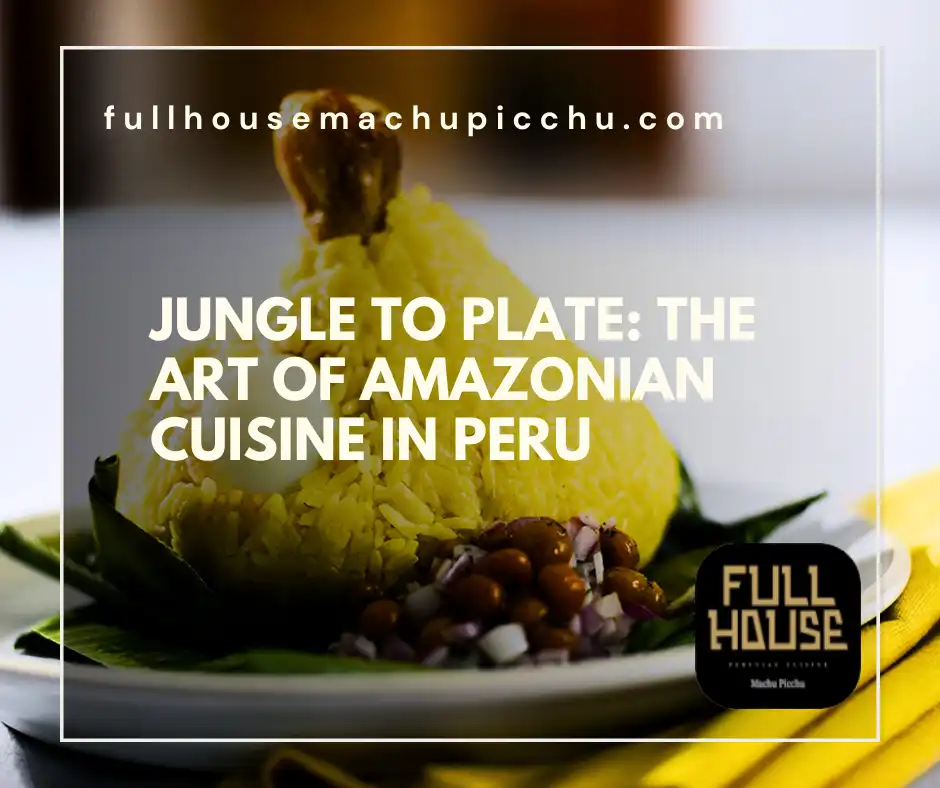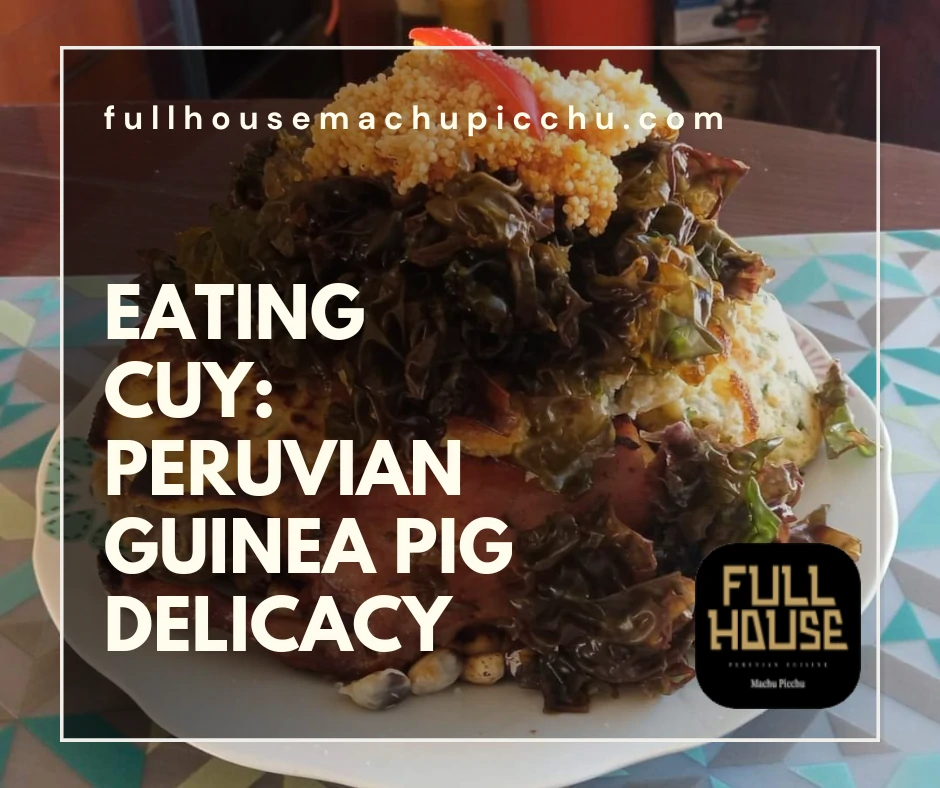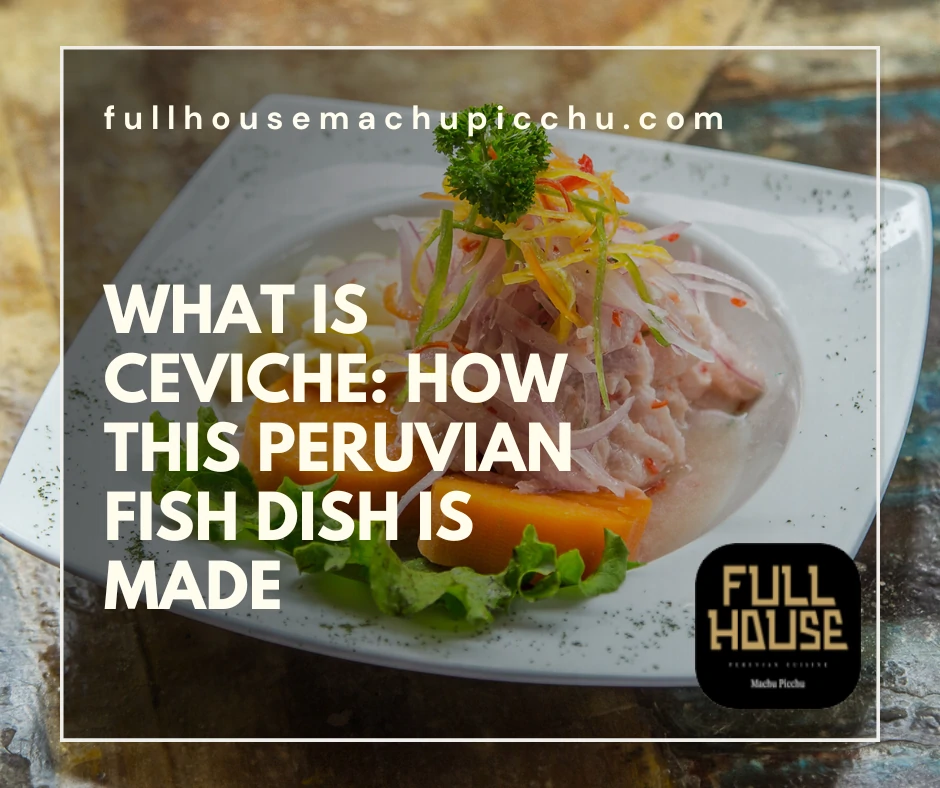Discover Amazonian cuisine in Peru. Peruvian jungle food is unique even among the rich gastronomy of Peru. Between delicious salty dishes to tropical fruits. The Peruvian amazon has a lot to offer.
The Peruvian jungle, a reservoir of biodiversity, offers more than just scenic beauty. It’s the birthplace of flavors unknown to the wider world. Here, food tells the story of nature’s bounty.
In “Jungle to Plate,” we dive deep into the heart of Amazonian culinary traditions. We explore how indigenous practices shape today’s dishes. And we reveal secrets passed down through generations.
Prepare to try native ingredients and innovative recipes. Experience the fusion of ancient techniques with contemporary flair. Join us as we walk you through this part of Peruvian gastronomy. But if you are looking for more regular Peruvian food, try sampling our menu.
Unveiling the Secrets: Ingredients That Define Amazonian Cuisine
Amazonian cuisine in Peru stands as a testament to the rich biodiversity of South America. It offers a unique blend of flavors, techniques, and ingredients. This cuisine has evolved over centuries, deeply rooted in the traditions of indigenous peoples.
In the heart of the Peruvian Amazon, the jungle provides an abundance of unique ingredients. These form the backbone of Amazonian cuisine in Peru. Let’s explore the key ingredients that define this culinary tradition.
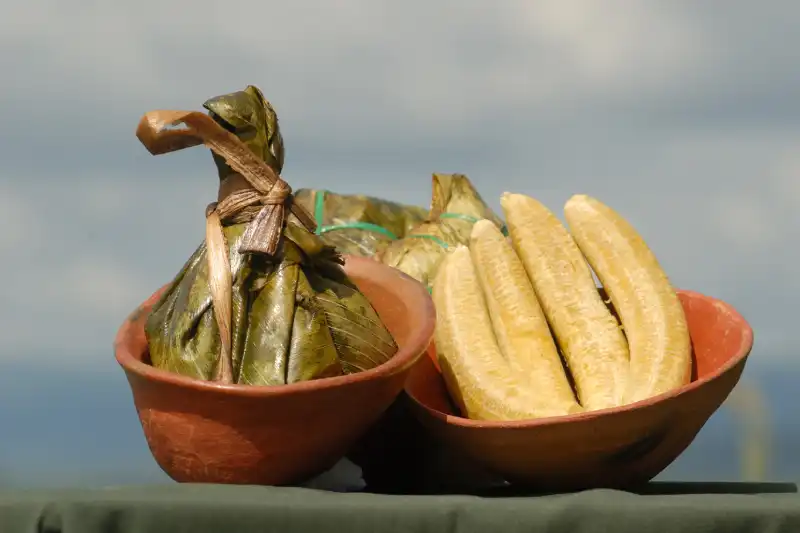
Meats of the Jungle
The Peruvian jungle is home to a variety of meats, each adding its unique flavor. Among these, the paiche, or arapaima, stands out. It’s the largest freshwater fish in the region, prized for its succulent meat. This fish often finds its way into dishes, requiring skill and tradition to prepare.
Wild game, including tapir and capybara, also enriches Amazonian cuisine in Peru. These meats offer a taste of the jungle’s wild side. They reflect the deep connection between the land and its people.
Fruits and Vegetables: A Tropical Bounty
The jungle’s flora contributes vibrant flavors and textures to Amazonian cuisine in Peru. Among them, the cocona fruit is a staple. It’s tangy and unique. It often pairs with diced onion in salads and sauces. Cocona is also popular in beverages.
Star fruit is also a popular native fruit. It’s sweeter, but many prefer to use it in beverages and deserts. The shape makes it of particular interest.
Camu camu are wild berries. These berries have a high content of vitamin c. Its red and pink color make them an eye-catching treat.
Bijao leaves, another cornerstone, wrap and infuse foods with a subtle, earthy aroma. These leaves are essential for traditional cooking methods, preserving the food’s moisture and flavor.
Subtle Spices and Seasonings
Spices in the Amazon are not just flavorings; they are stories of the jungle. They bring dishes to life, offering hints of the terrain and climate. Lightly spiced diced onion, mixed with the tangy cocona, creates a foundation for many sauces and marinades.
The Art of Amazonian Dishes
Amazonian cuisine in Peru is not just about the ingredients but how they come together. A classic example is fish marinated in a mixture of spices, wrapped in bijao leaves, and then grilled. This method imbues the fish with a smoky flavor, unique to the jungle.
Another popular dish combines paiche with a light mayonnaise-based drizzle. This is then completed with fried banana chips called patacones (made out of smash banana). It’s a blend of textures and flavors that embodies the spirit of Amazonian cuisine.
The Role of Markets in Amazonian Cuisine
Markets in cities like Iquitos and San Juan Bautista are the lifeblood of Amazonian cuisine in Peru. Here, chefs and home cooks alike find the freshest ingredients. From delicate palm hearts to the largest freshwater fish, these markets offer a glimpse into the jungle’s bounty.
A Culinary Journey Through the Peruvian Amazon
Exploring Amazonian cuisine in Peru is a journey through the senses. Dishes are best enjoyed by locals, often dressed with fried banana chips called Chifles. They feature a tomato and onion sauce. This salad includes shredded palm hearts.
In every bite, one can taste the care, tradition, and skill required to prepare these meals. It’s a cuisine that invites you to explore deeper into the heart of the Peruvian Amazon.
From Tradition to Table: The Journey of Peru’s Jungle Dishes
Amazonian cuisine in Peru is a celebration of nature and culture. It brings the untamed spirit of the jungle to the dining table. This journey from tradition to table is a story of flavors, ingredients, and centuries-old practices.
In the Peruvian Amazon, cooking is an art passed down through generations. It involves a deep understanding of the land and its offerings. Let’s delve into the journey of these dishes, from their origins to your plate.
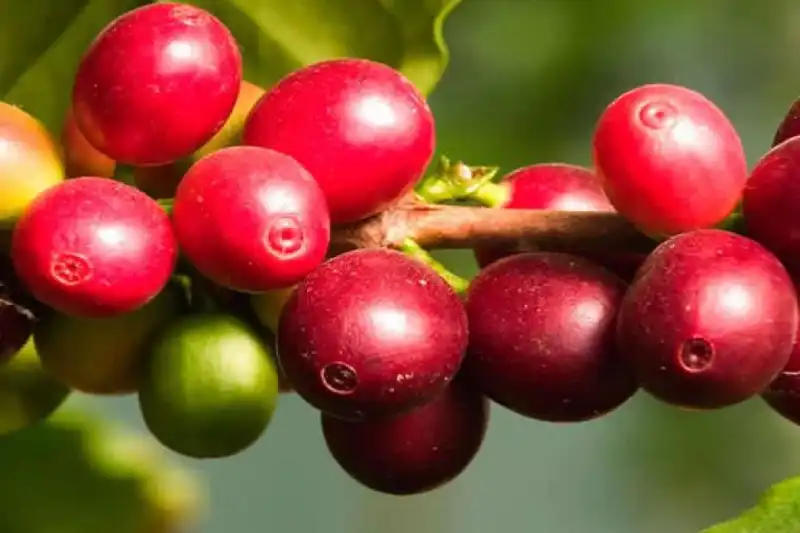
The Ancestral Roots of Amazonian Cooking
Cooking in the Amazon is more than preparing food. It’s a ritual that respects the jungle’s rhythm. This respect is evident in the choice of ingredients and cooking methods.
The Peruvian Amazon, rich in biodiversity, supplies a variety of unique ingredients. These ingredients are the soul of Amazonian cuisine in Peru. Locals rely on traditional knowledge to harvest and prepare them.
A Tapestry of Flavors
Each dish tells a story of the jungle’s abundance. The largest freshwater fish, the paiche (also known as arapaima), is a prime example. Its preparation requires skill and patience, embodying the essence of Amazonian cuisine.
Bijao leaves wrap foods, preserving their flavors and moisture. This technique showcases the harmony between cooking and nature. It’s a testament to the ingenuity of indigenous peoples.
Marketplaces: The Culinary Crossroads
In cities like San Juan Bautista, markets play a crucial role. They are where the jungle’s bounty meets the culinary world. Here, ingredients like the cocona fruit and bijao leaves come alive.
Markets are also where traditional dishes find new enthusiasts. They bridge the gap between the old ways and modern tastes. It’s a place of discovery for locals and visitors alike.
The Evolution of Jungle Cuisine
Over time, Amazonian cuisine in Peru has adapted and evolved. Yet, it retains its connection to tradition and the environment. This evolution reflects in dishes dressed with patacones or adorned with a tomato and onion sauce.
Modern presentations often include a light mayonnaise-based drizzle. Yet, they never stray far from their roots. The essence of the jungle remains intact, inviting diners to explore the depth of Amazonian flavors.
A Culinary Invitation
Amazonian cuisine in Peru is an invitation to experience the Peruvian Amazon. It offers a taste of a world where cooking and nature intertwine. Each dish is a celebration, best enjoyed as locals do, with an open heart and curiosity.
The journey of Peru’s jungle dishes is a testament to the region’s rich cultural tapestry. It shows how tradition can traverse time, bringing the jungle’s untamed spirit to the modern table.
A Taste of the Wild: Iconic Dishes of the Peruvian Jungle
The Peruvian Amazon offers an array of flavors as diverse as its ecosystem. Amazonian cuisine in Peru captures the essence of the jungle. Each dish tells a story of survival, tradition, and the bounty of nature.
Juane: A Celebration of Flavor and Tradition
Juane is the epitome of Amazonian cuisine in Peru. Named after San Juan Bautista, it celebrates the feast of Saint John the Baptist. This dish features rice, chicken, eggs, and olives, all wrapped in bijao leaves. The leaves impart a distinct flavor, making Juane a beloved dish in the Peruvian Amazon.
Tacacho with Cecina: The Perfect Pair
Tacacho, a blend of mashed plantains and pork lard, pairs perfectly with cecina, or smoked pork. This combination is a hearty reflection of the jungle’s generosity. Served with a side of salsa, it’s a taste of the wild that’s hard to forget.
Paiche: A Testament to the Amazon’s Bounty
The paiche, South America’s largest freshwater fish, is a staple of the region. Its meat is firm and flavorful. Locals love it grilled.
Ceviche de Doncella: A Jungle Twist on a Classic
In the Peruvian Amazon, ceviche takes on a unique form. Here, doncella, a river fish, marinates in lime and spiced with diced onion and cocona fruit. This dish, often completed with fried banana chips called chifles, offers a fresh taste of the river’s bounty.
Patarashca: Flavor Wrapped in Nature
Patarashca is a testament to the ingenious use of natural resources. Fish seasoned with spices and wrapped in bijao leaves, then grilled. The leaves protect the fish, keeping it moist and infusing it with a smoky flavor. It’s a delicious example of how the jungle provides both the ingredients and the means to cook them.
Mazato: A Sip of Tradition
Mazato is a traditional fermented drink made from yuca. Enjoyed by locals, it’s a connection to the past and a staple at communal gatherings. This beverage illustrates the importance of fermented foods in the jungle’s diet.
